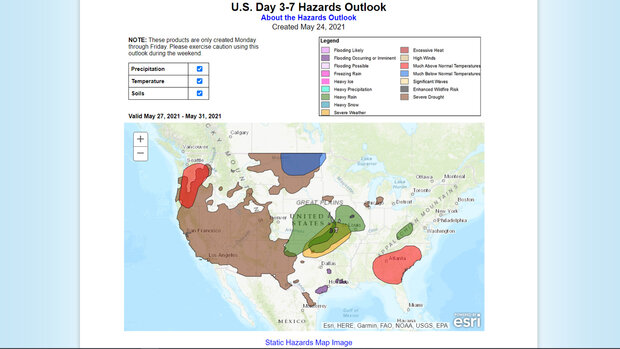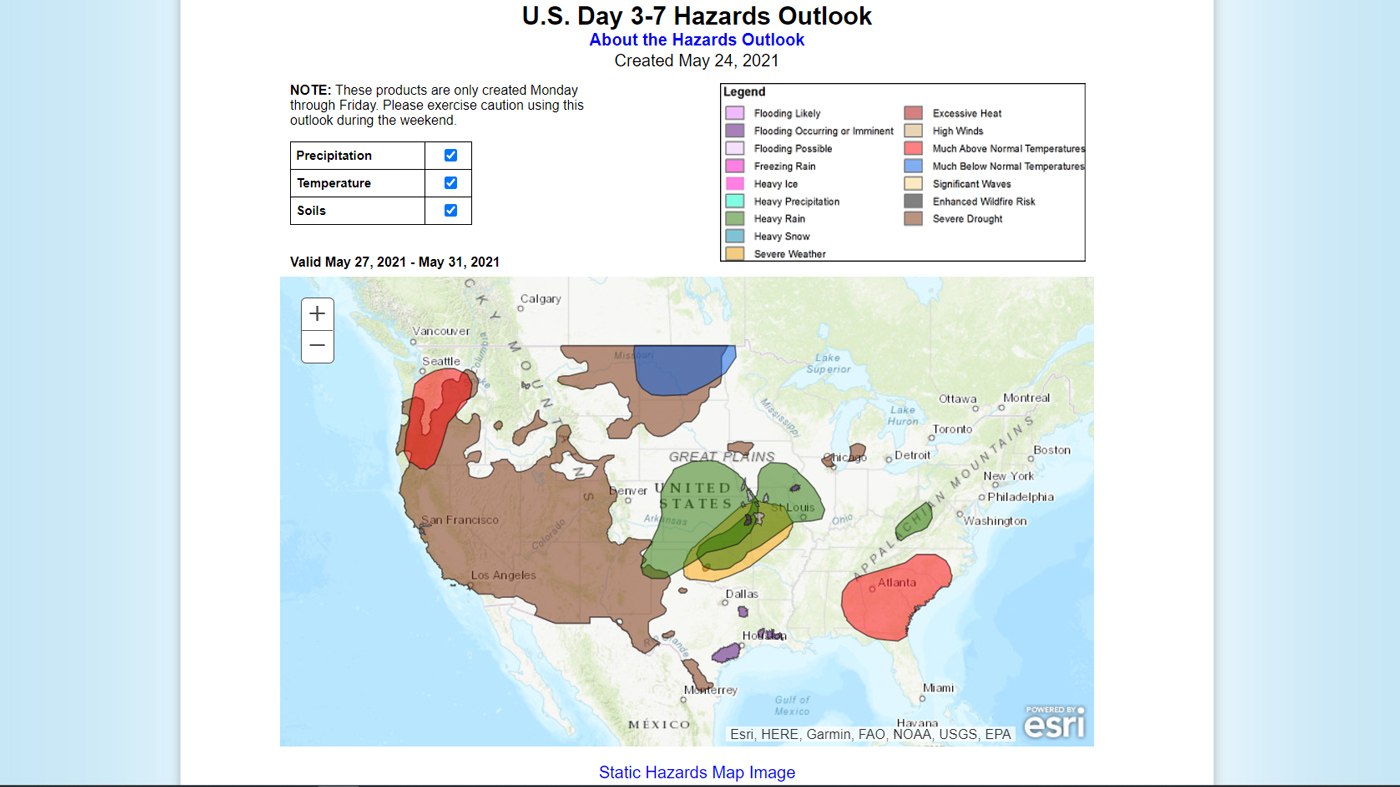Monday through Friday of each week, NOAA's Climate Prediction Center issues an outlook of weather- and climate-related hazards to the United States for the next eight to fourteen days. Potential hazards are shown for precipitation (heavy rain or snow), temperature (much-above or much-below normal), and soils (drought), Hazards maps are accompanied by a text summary.
Where do these data come from?
Climate Prediction Center (CPC) meteorologists and oceanographers review climate and weather observations and data along with model results. They assess their meaning, significance, and current status, and likely future climate impacts.
-
What can I do with these data?
- Get advance warning of potentially hazardous conditions
- See where heavy rain or snow is likely, or much above- or much below- normal temperatures are expected.
How do I use the site?
The site has two interactive maps.
- On the top map, use check boxes to display hazards of interest.
- Click the + and - buttons to zoom in and out. Click and drag to pan.
On the second map, roll your cursor over the various headings to display a map of indicated elements. Click any map to view a larger version.
Download map layers from the left sidebar.
-
Data Format(s)KML, shapefile
Access Type Link & Description Mapping Interactive maps and discussion of potential hazards. Shapefile and KML downloads are available on the same page. -
Documentation Type Link & Description General Week-2 U.S. Hazards Outlook description. Interest Who to contact about specific CPC products, including forecasts and outlooks. -
Available from October 2008 (Monday - Friday Only)Outlook product depicts possible impending weather-related hazards during the medium-range, day 3-7 forecast period.Climate Prediction Center (CPC) meteorologists and oceanographers review climate and weather observations and data along with model results; assess their meaning, significance, and current status; and likely future climate impacts. Their findings are issued as assessments, advisories, special outlook discussions, and bulletins.
-
Data TypeModelEssential Climate VariablesAir temperature, ,Science OrganizationClimate Prediction CenterEmailJon.Gottschalck@noaa.gov
 Click to see more detail
Click to see more detail
